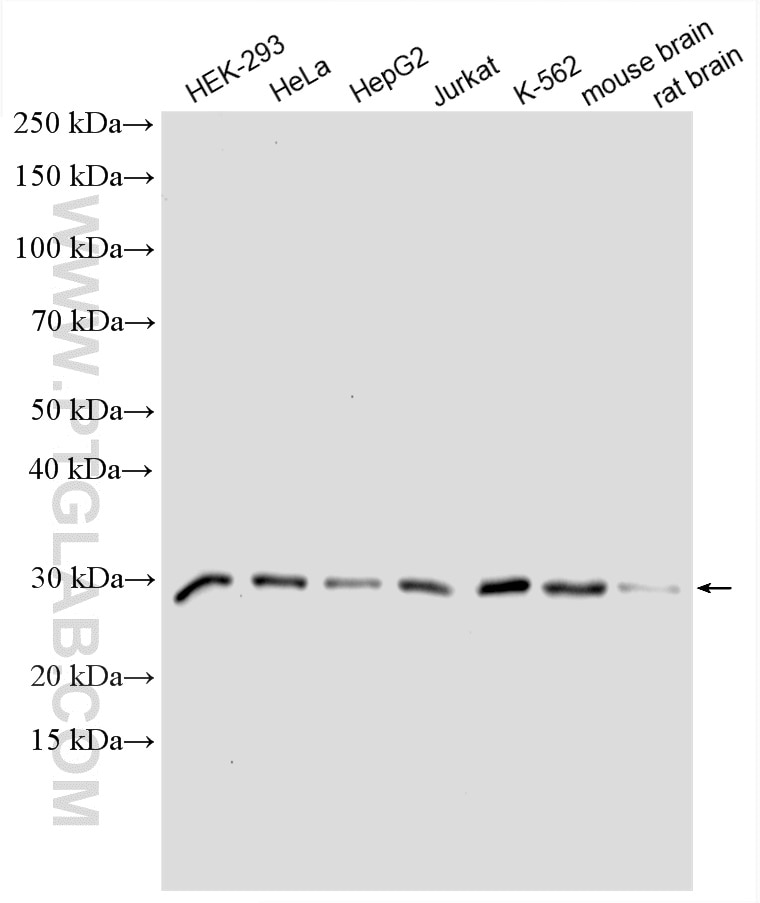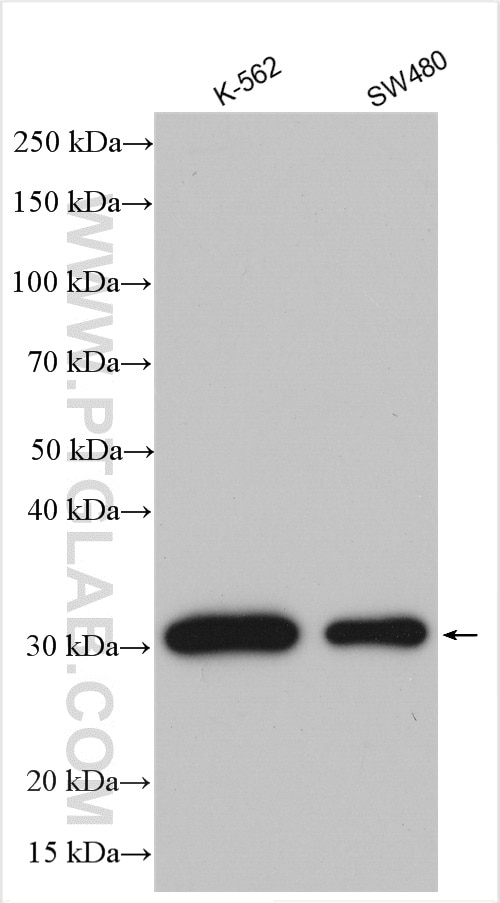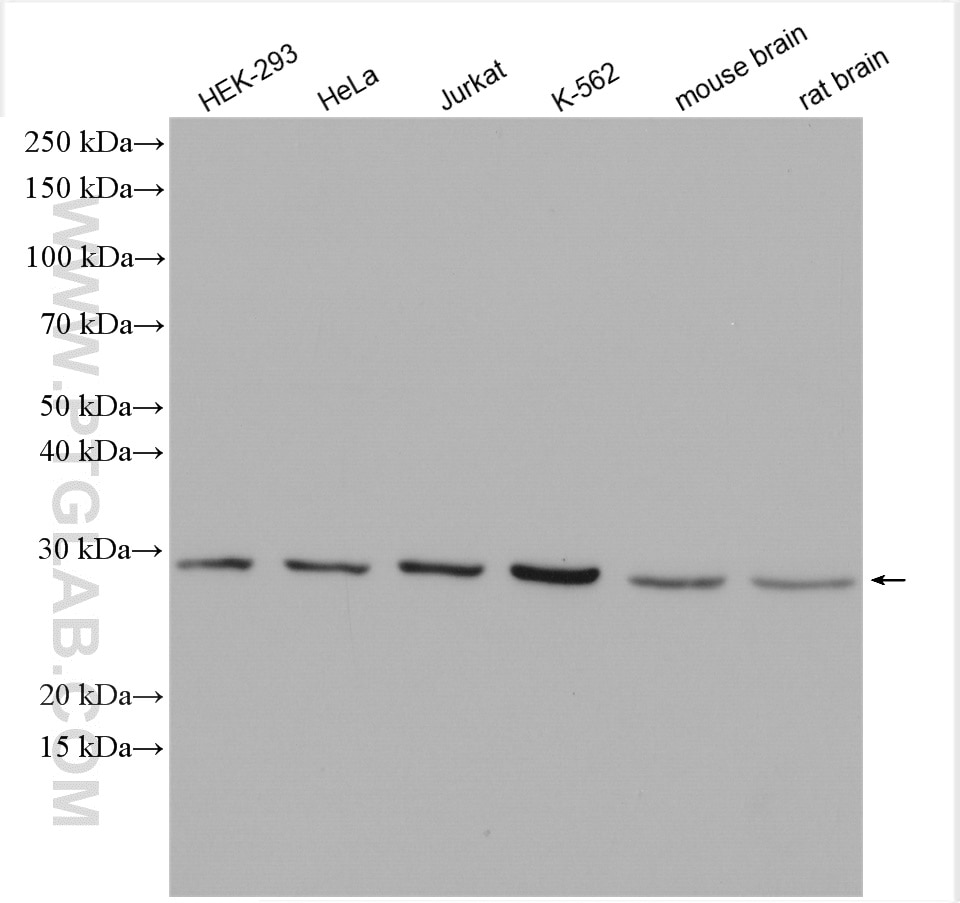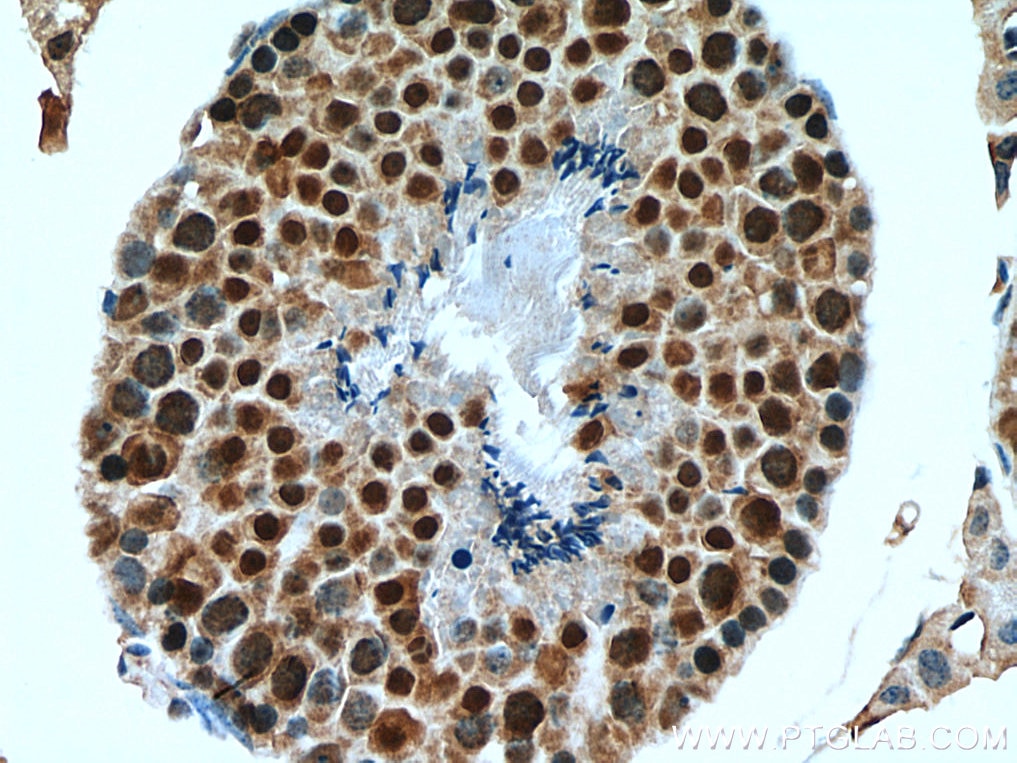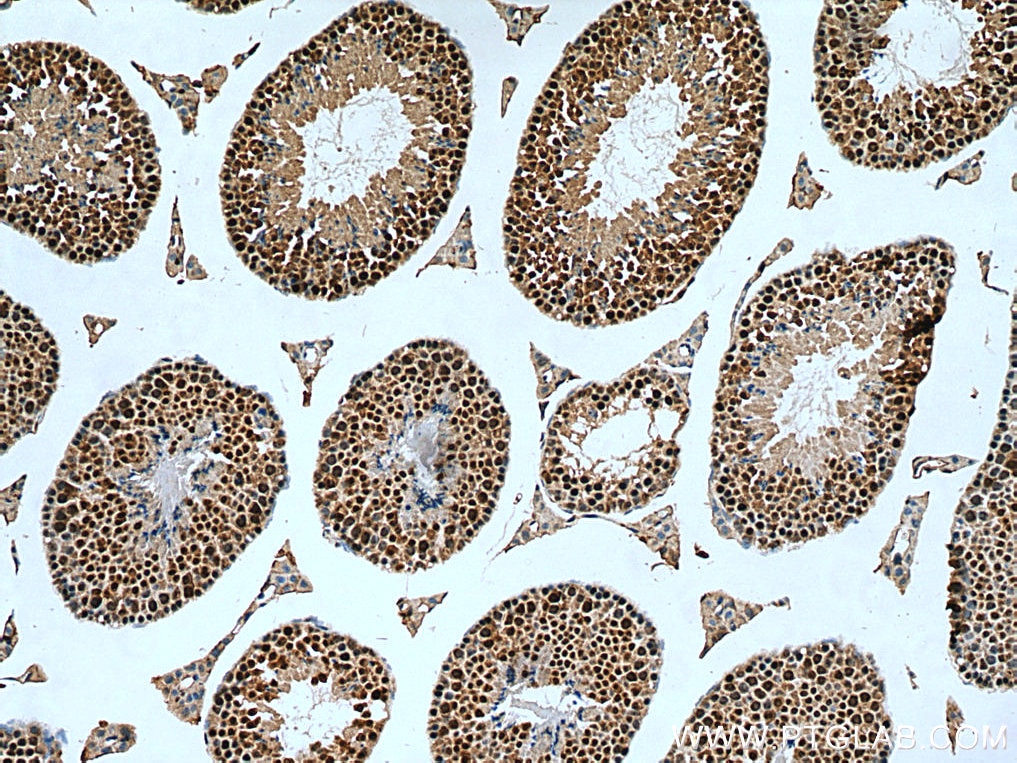Tested Applications
| Positive WB detected in | HEK-293 cells, K-562 cells, HeLa cells, Jurkat cells, mouse brain tissue, rat brain tissue, SW480 cells, HepG2 cells |
| Positive IHC detected in | mouse testis tissue Note: suggested antigen retrieval with TE buffer pH 9.0; (*) Alternatively, antigen retrieval may be performed with citrate buffer pH 6.0 |
| Positive IF-P detected in | mouse colon tissue |
Recommended dilution
| Application | Dilution |
|---|---|
| Western Blot (WB) | WB : 1:500-1:2000 |
| Immunohistochemistry (IHC) | IHC : 1:1000-1:4000 |
| Immunofluorescence (IF)-P | IF-P : 1:500-1:2000 |
| It is recommended that this reagent should be titrated in each testing system to obtain optimal results. | |
| Sample-dependent, Check data in validation data gallery. | |
Published Applications
| WB | See 8 publications below |
| IHC | See 1 publications below |
| IF | See 1 publications below |
Product Information
24479-1-AP targets GID8 in WB, IHC, IF-P, ELISA applications and shows reactivity with human, mouse, rat samples.
| Tested Reactivity | human, mouse, rat |
| Cited Reactivity | human, mouse |
| Host / Isotype | Rabbit / IgG |
| Class | Polyclonal |
| Type | Antibody |
| Immunogen |
CatNo: Ag19751 Product name: Recombinant human C20orf11 protein Source: e coli.-derived, PET28a Tag: 6*His Domain: 1-228 aa of BC032120 Sequence: MSYAEKPDEITKDEWMEKLNNLHVQRADMNRLIMNYLVTEGFKEAAEKFRMESGIEPSLDLETLDERIKIREMILKGQIQEAIALINSLHPELLDTNRYLYFHLQQQHLIELIRQRETEAALEFAQTQLAEQGEESRECLTEMERTLALLAFDSPEESPFGDLLHTMQRQKVWSEVNQAVLDYENRESTPKLAKLLKLLLWAQNELDQKKVKYPKMTDLSKGVIEEPK Predict reactive species |
| Full Name | chromosome 20 open reading frame 11 |
| Calculated Molecular Weight | 228 aa, 27 kDa |
| Observed Molecular Weight | 30 kDa |
| GenBank Accession Number | BC032120 |
| Gene Symbol | GID8 |
| Gene ID (NCBI) | 54994 |
| RRID | AB_2879562 |
| Conjugate | Unconjugated |
| Form | Liquid |
| Purification Method | Antigen affinity purification |
| UNIPROT ID | Q9NWU2 |
| Storage Buffer | PBS with 0.02% sodium azide and 50% glycerol, pH 7.3. |
| Storage Conditions | Store at -20°C. Stable for one year after shipment. Aliquoting is unnecessary for -20oC storage. 20ul sizes contain 0.1% BSA. |
Background Information
The GID8 protein is a component of the Glucose-Induced Degradation-deficient (GID) complex, which plays a key role in ubiquitin-mediated protein degradation, a pathway used to regulate protein turnover in eukaryotic cells. Initially discovered in yeast, GID8 acts as a scaffold protein that is essential for the assembly of the multi-subunit GID complex and for substrate recognition. This complex plays a significant role in metabolic regulation, such as degrading fructose-1,6-bisphosphatase (FBPase) during the shift from gluconeogenesis to glycolysis. In humans, GID8 is part of the CTLH complex, which is associated with various cellular processes including cell cycle regulation, apoptosis, and cancer progression.
Protocols
| Product Specific Protocols | |
|---|---|
| IF protocol for GID8 antibody 24479-1-AP | Download protocol |
| IHC protocol for GID8 antibody 24479-1-AP | Download protocol |
| WB protocol for GID8 antibody 24479-1-AP | Download protocol |
| Standard Protocols | |
|---|---|
| Click here to view our Standard Protocols |
Publications
| Species | Application | Title |
|---|---|---|
PLoS Genet Role of Bicaudal C1 in renal gluconeogenesis and its novel interaction with the CTLH complex. | ||
Sci Rep Tagging enhances histochemical and biochemical detection of Ran Binding Protein 9 in vivo and reveals its interaction with Nucleolin. | ||
bioRxiv Genome-wide screen of Mycobacterium tuberculosis- infected macrophages identified the GID/CTLH complex as a determinant of intracellular bacterial growth | ||
Cancer Lett YTHDF1 regulates GID8-mediated glutamine metabolism to promote colorectal cancer progression in a m6A-dependent manner | ||
Mol Cell mTORC1-CTLH E3 ligase regulates the degradation of HMG-CoA synthase 1 through the Pro/N-degron pathway | ||
Nat Commun Genome-wide screen of Mycobacterium tuberculosis-infected macrophages revealed GID/CTLH complex-mediated modulation of bacterial growth |
Reviews
The reviews below have been submitted by verified Proteintech customers who received an incentive for providing their feedback.
FH H (Verified Customer) (09-27-2020) | GID8 was pulled down with MAEA-flag, so I could tell which band is GID8. But without IP, it would be difficult to tell which band is the GID8, because the on-target band signal is too weak, while off-target band signals are strong in HEK293T cells
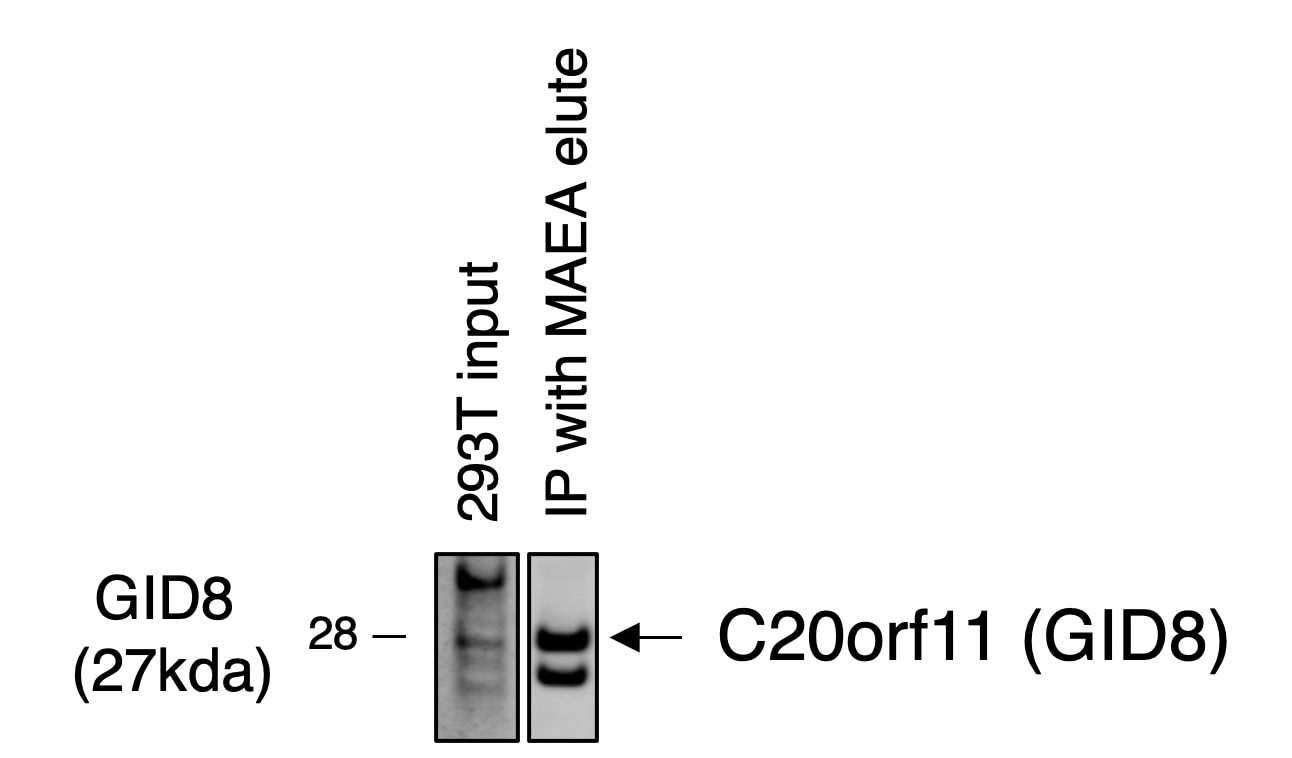 |

